

Price: $289
Packaged weight: 2 lb. 7.8 oz.
Floor area: 33.2 sq. ft.
Capacities: 1P, 2P
What we like: Easy to pitch, spacious for two hikers, incredibly storm-worthy at a nearly ultralight weight, great price.
What we don’t: Large footprint size makes it difficult to fit into tight spots and the interior is low on pockets.
See the Durston X-Mid 2
The X-Mid 2-person tent was Durston’s debut product in 2018, and it immediately became one of the most sought-after ultralight trekking pole-supported tents. After a few iterations and minor improvements over the years, the X-Mid 2 offers incredible value in a lightweight, spacious, storm-worthy, and user-friendly package. It’s the ideal tent for backpackers and thru-hikers looking to lighten their load without breaking the bank. After testing this tent over a summer of backpacking in the Pacific Northwest, I came away impressed with its well-rounded design. Below I break down my experiences with the Durston Gear X-Mid 2. To see how it stacks up to the competition, check out our articles on the best ultralight tents and best backpacking tents.
Editor’s note: The Durston X-Mid 2 tent was updated for the 2025 season with revised seams and seam taping, redesigned pockets, improved hardware, and a switch to 15-denier silpoly fabric—all aimed at reducing the weight to a claimed 1 pound 14.4 ounces without compromising durability. The review below refers to the previous version of the X-Mid 2. We are currently testing the latest model and will update this article with our findings soon.
Weighing in at just 2 pounds 7.8 ounces—including the tent body, stuff sack for both fly and inner, and eight included stakes—the Durston X-Mid 2 falls easily within the ultralight category. For comparison, Tarptent’s Stratospire 2, which uses a similar design and materials, weighs slightly more at 2 pounds 11.8 ounces. Ounce-counters can lose a bit more weight by leaving behind the inner tent (which will save 15.6 ounces) or packing just four of the eight included stakes (forecast permitting, of course). To be sure, there are even lighter-weight tents on the market, such as Zpacks Duplex (1 lb. 1.9 oz.) and Hyperlite’s Unbound tent (1 lb. 8.0 oz.), but both come at a $700 premium. In my opinion, the extra pound is well-worth the $400 savings.
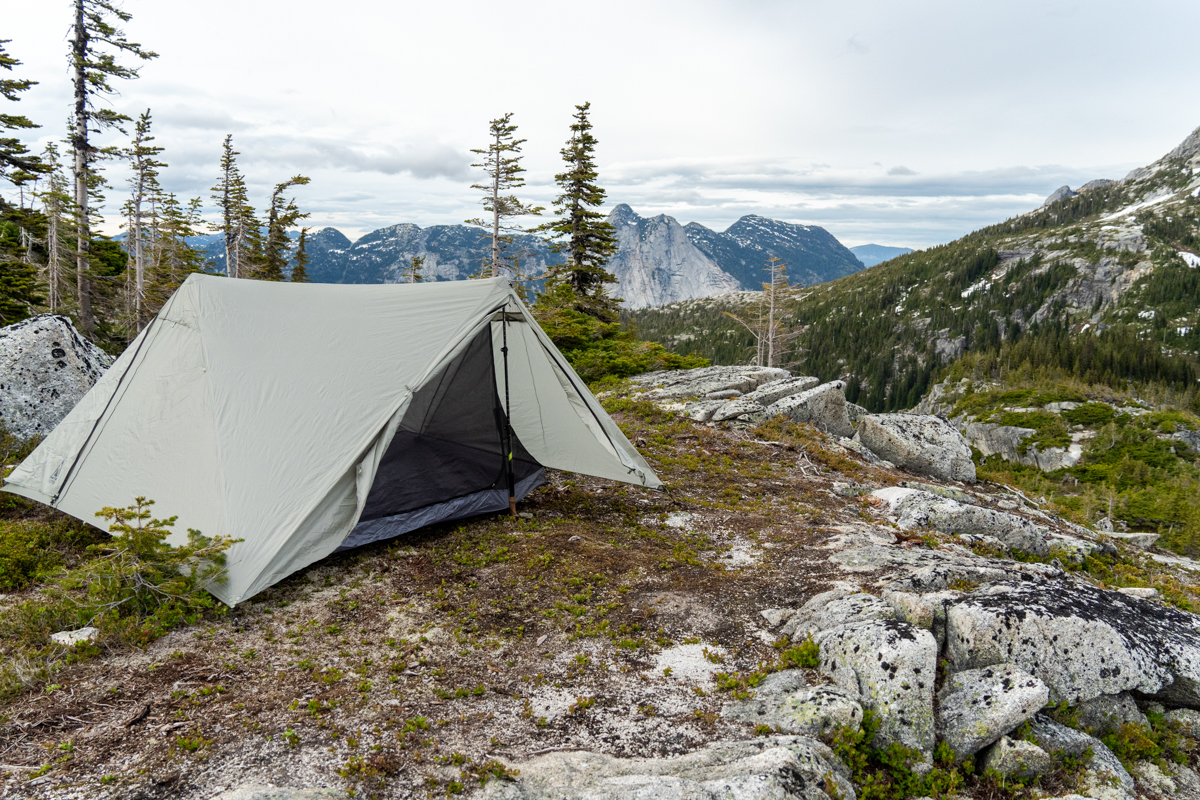
When storing the tent inside the included stuff sack, the X-Mid 2 packs into a neat bundle measuring 12 by 6 inches. Though it could be compressed further, I found it easy to tuck into most backpacking backpacks. Durston Gear supplies two stuff sacks with the tent—one for the inner and one for the entire bundle. In practice, both stuff sacks were a tight fit, and I preferred to roll or stuff the tent loosely into my pack rather than wrestle with the slippery fabric.
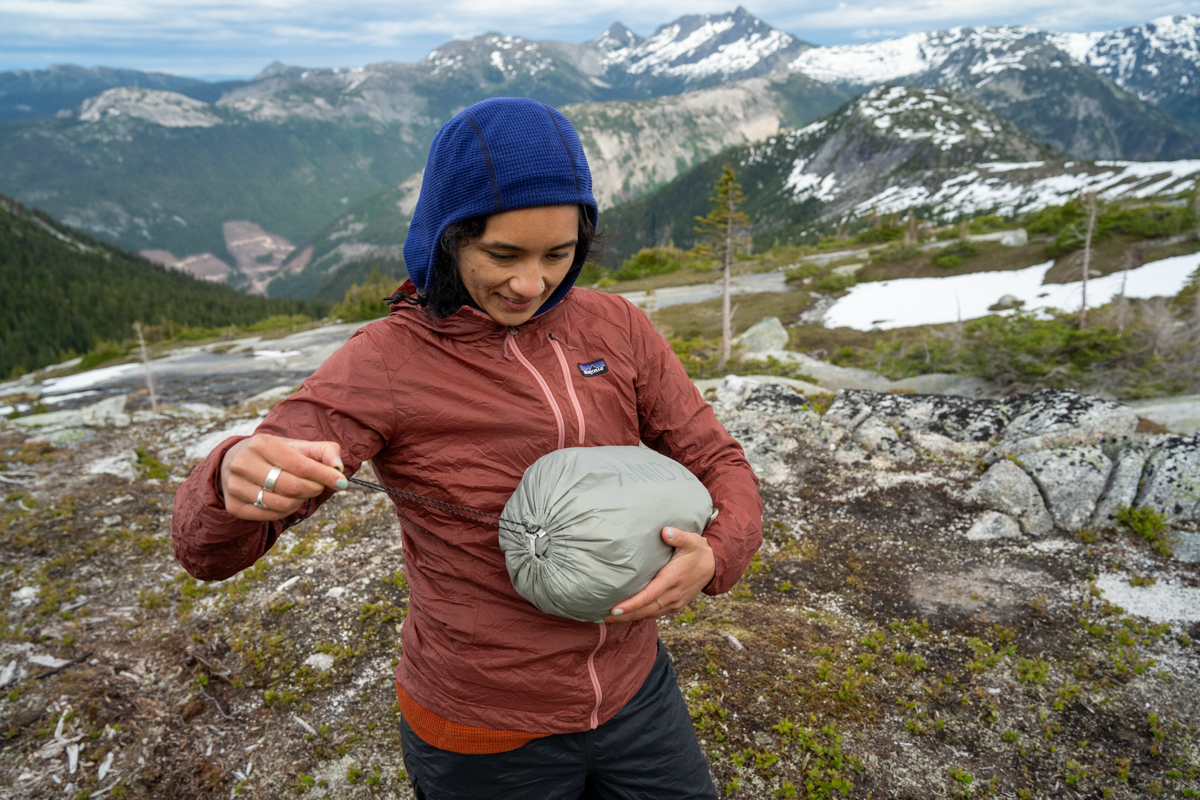
On paper, the X-Mid 2 boasts a generous 33.2 square feet of interior space, with dual-door entry and impressively large vestibules. Compared to popular ultralight 2-person tents such as MSR’s Hubba Hubba LT and Big Agnes’s Tiger Wall UL 2 (32- and 28 sq. ft. of floor area, respectively), the X-Mid 2 clearly leads in interior space. My partner and I normally opt for a three-person tent to ensure that we have enough space for ourselves, our gear, and our dog, but the X-Mid 2 never felt cramped, even while waiting out prolonged rainstorms or avoiding hordes of mosquitoes in the mesh inner.
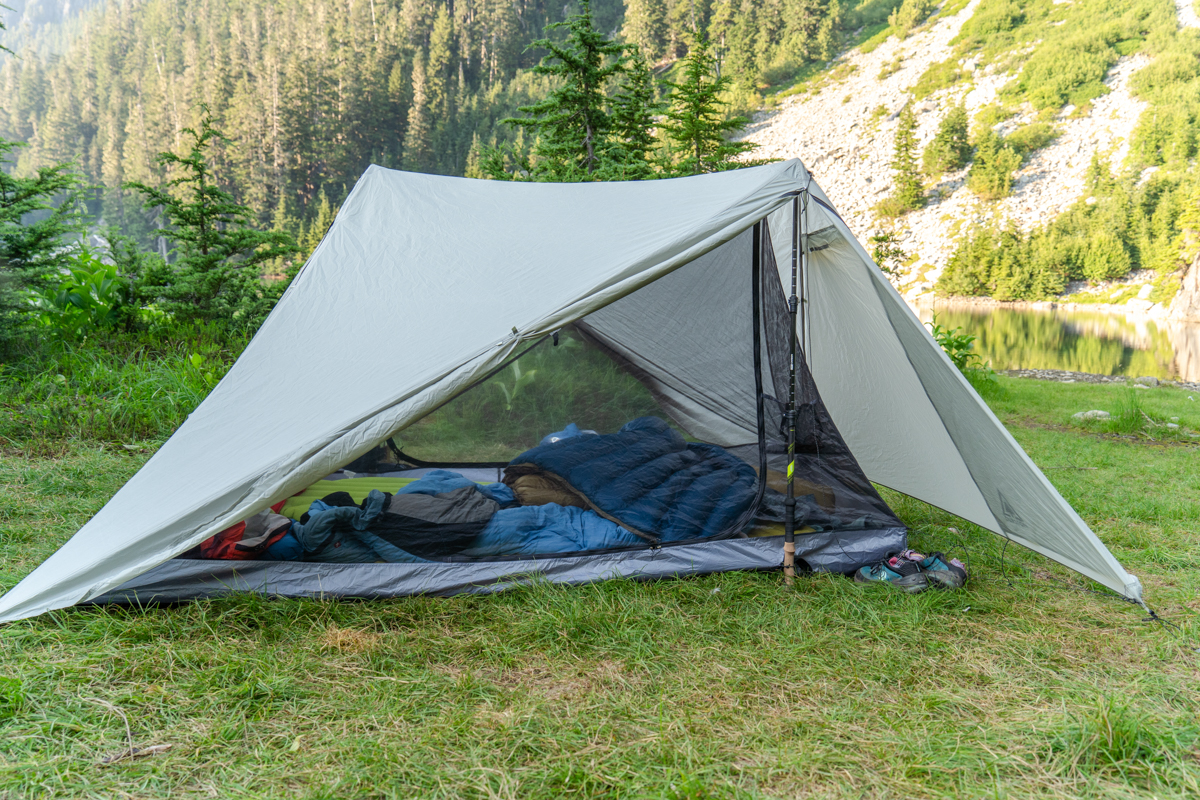
With a floor width of 52 inches, the X-Mid 2 can easily accommodate two wide sleeping pads with room at the sides to tuck smaller items such as extra layers, cameras, or mess kits. The 92-inch length should even fit tall hikers (Durston claims those up to 6’4” will be comfortable), and for additional gear to be tucked at the head or foot. What’s more, such a large floor area allows for much-appreciated separation from the tent walls at night, and more room for each person to move around without disturbing the other. Lastly, the generous peak height (48 in.) provides ample room for sitting up or getting changed inside the tent. Overall, I thought the X-Mid 2 offered fantastic livability, especially for an ultralight tent.
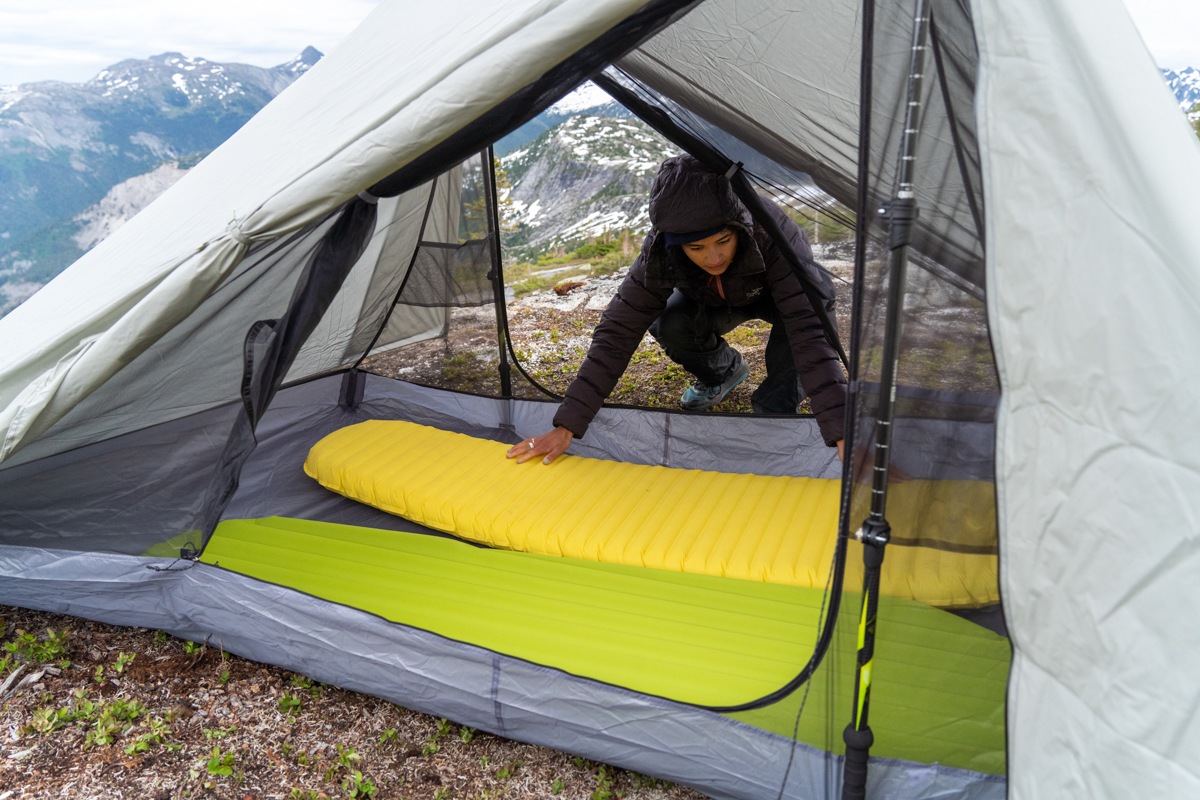
Though Durston Gear is relatively new to the ultralight scene, they’re known for their use of premium materials and thoughtful designs, and the X-Mid 2 is no exception. To start, this tent features a silicone-coated polyester fly (also known as silpoly) rather than silicone-coated nylon (silnylon) found on popular tents like the Big Agnes line or MSR. Silpoly is more UV resistant than silnylon (meaning it won’t lose its strength as readily with heavy use) and is also more resistant to sagging when wet. For comparison, I find myself re-staking the silnylon fly on my Big Agnes Copper Spur HV UL3 tent more often on rainy trips than the silpoly fly on the X-Mid 2.
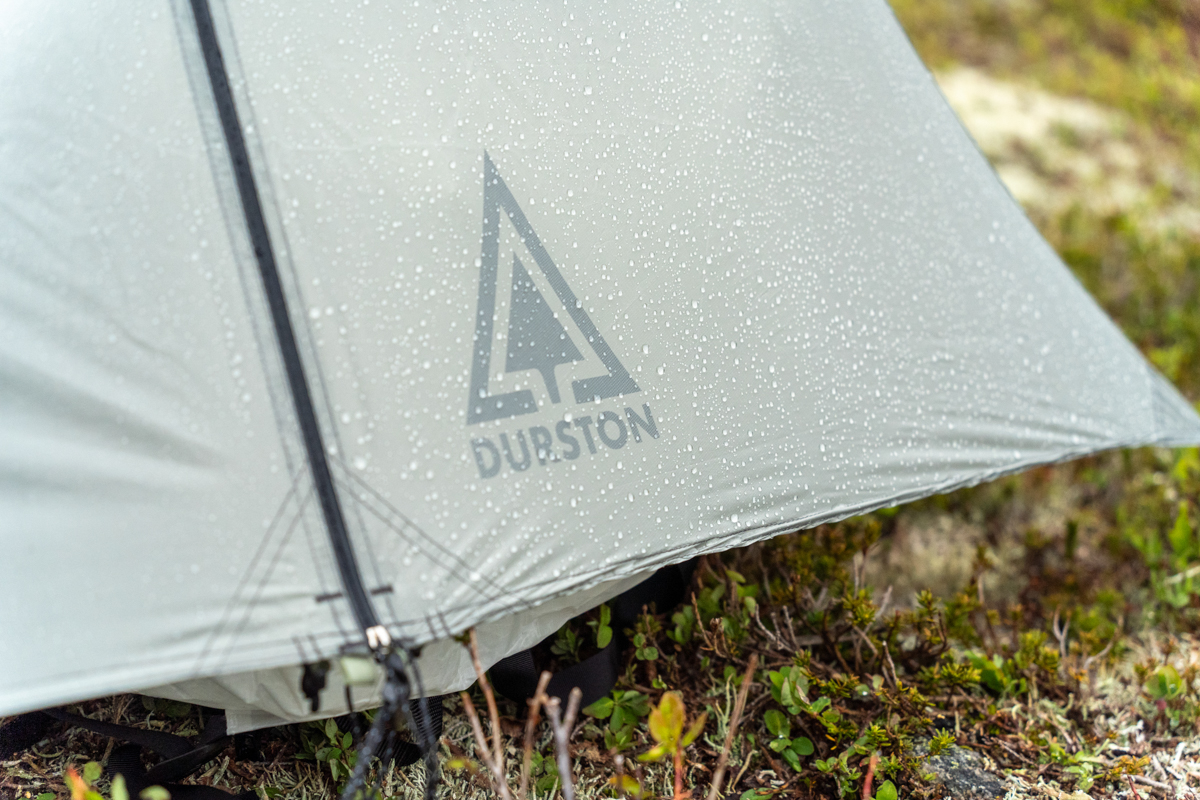
In order to save weight, the X-Mid’s 20-denier (D) silpoly fly and floor land on the thinner side (the latest version features 15D fabric), but even after a dozen nights in the backcountry—where it endured being pitched on sharp rocks and trampled by dog claws—my tent has no wear to show for it. Durston clearly has an eye for the finer details too: The X-Mid boasts double stitching and double-folded edges on parts prone to wear. The waterproof zippers feel robust and operate smoothly, no matter how tightly the fly is pitched, and the buckle on the fly is a thoughtful touch that reduces strain on the zipper. While the construction of the X-Mid 2 is overall confidence-inspiring, its lightweight materials are inherently more prone to wear, and the tent should be treated with a bit more caution than non-ultralight backpacking tents.
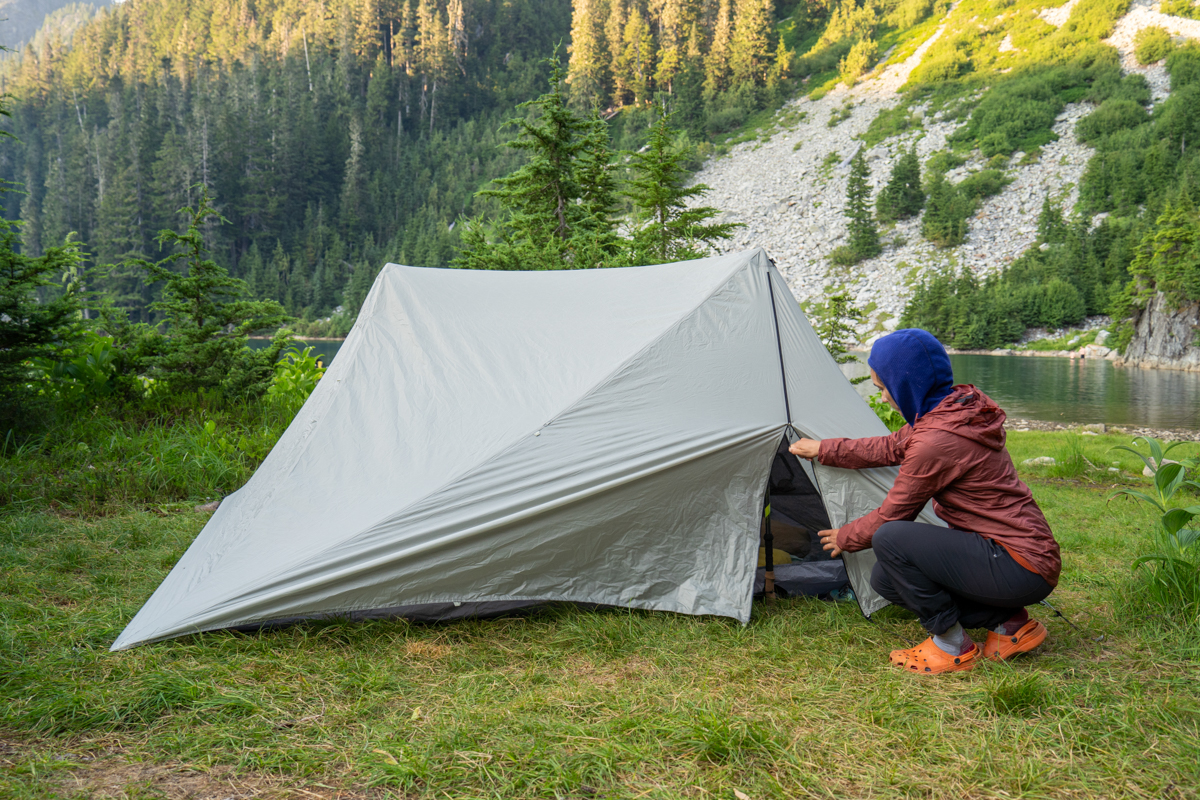
Wind
Despite the lightweight build, the X-Mid 2 is an incredibly sturdy and protective tent, and I’d feel confident taking it into some difficult three-season conditions. In fact, I had no issue taking this tent out on an early-season backpacking trip into the sub-alpine and pitching it on an exposed ridge where it was tormented by gusts through the night. Durston advises pitching this tent with the narrowest edge facing the wind for optimal stability, but even with the broadside of the tent taking the brunt of the gusts, the steep side panels effectively channel the wind around the tent. I did have some issues with the stakes popping out of the ground and the guylines slipping, but I chalk that up to user error. Once I figured out how to keep the stakes anchored in the shallow soil, they held strong through the storm.
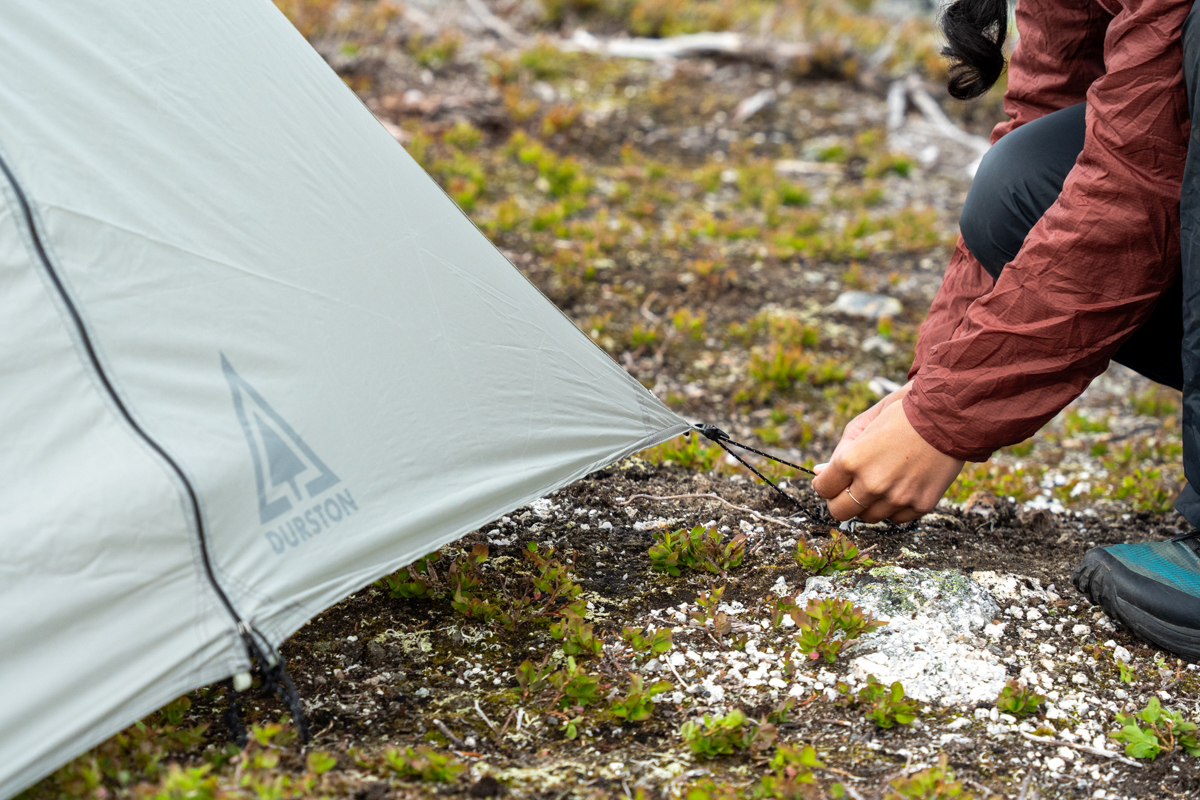
Rain
The X-Mid 2 held up equally as well to rainy conditions, too. The full-coverage rainfly shrugged off days of extended drizzle and rain, and the watertight zippers and taped seams added even more wet-weather assurance. To be sure, the bathtub floor isn’t the tallest you can find, but it provides adequate protection from rain splashing off the fly—plus, the fly extends down close to the ground, giving the tent fortress-like protection. As mentioned above, the silpoly fly is more resistant to sagging than silnylon competitors, and after a night of heavy precipitation, it retained its tension and continued to bead water as though it were still dry. I was struck by how quickly the fly dried when the rain abated in the morning—a quick shake was all that was required before packing the tent away.
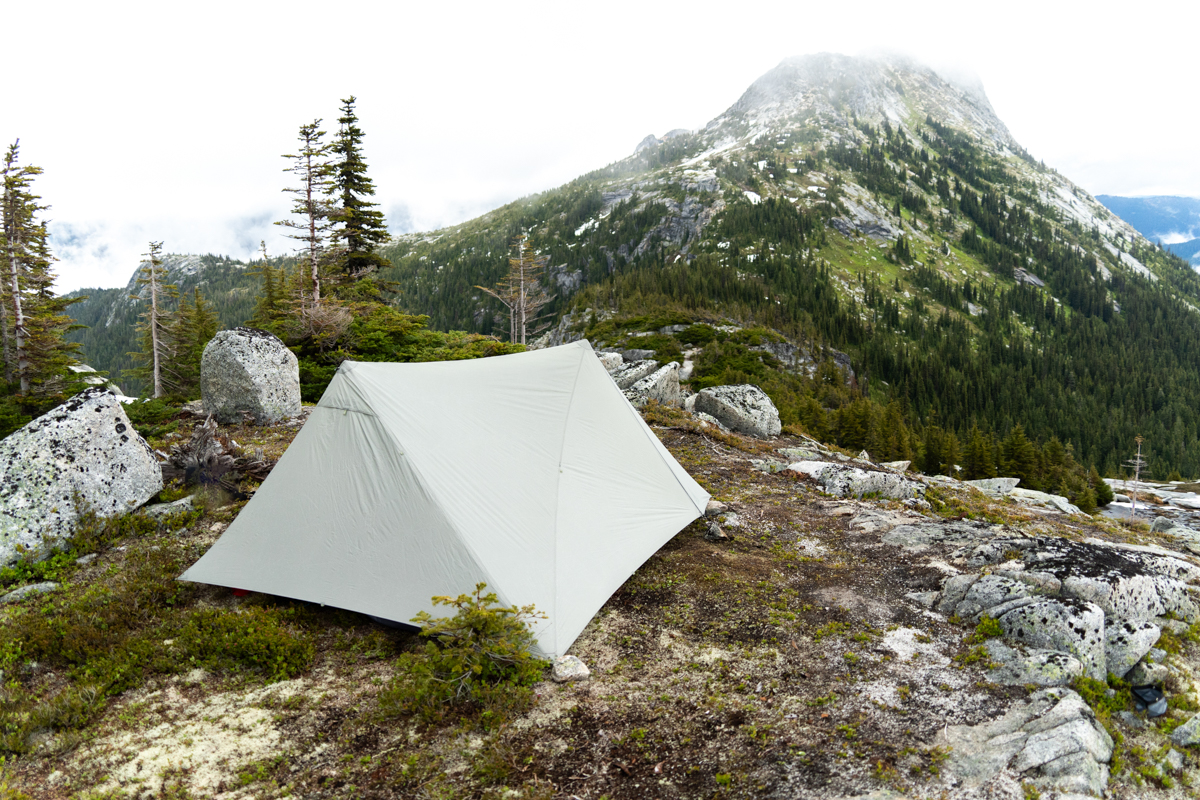
Even when waiting out prolonged rainstorms in the humid Pacific Northwest, I found the X-Mid 2 to be impressively well-ventilated. There is a generous separation between the fly and the inner mesh tent, so even if condensation builds up inside, it conveniently drips off the fly away from the inner. Like all double-wall tents, the mesh inner offers excellent airflow in warm weather, and the fly can be raised or doors propped open if more ventilation is needed. There are also two small apex vents, though their small size makes me question their effectiveness.
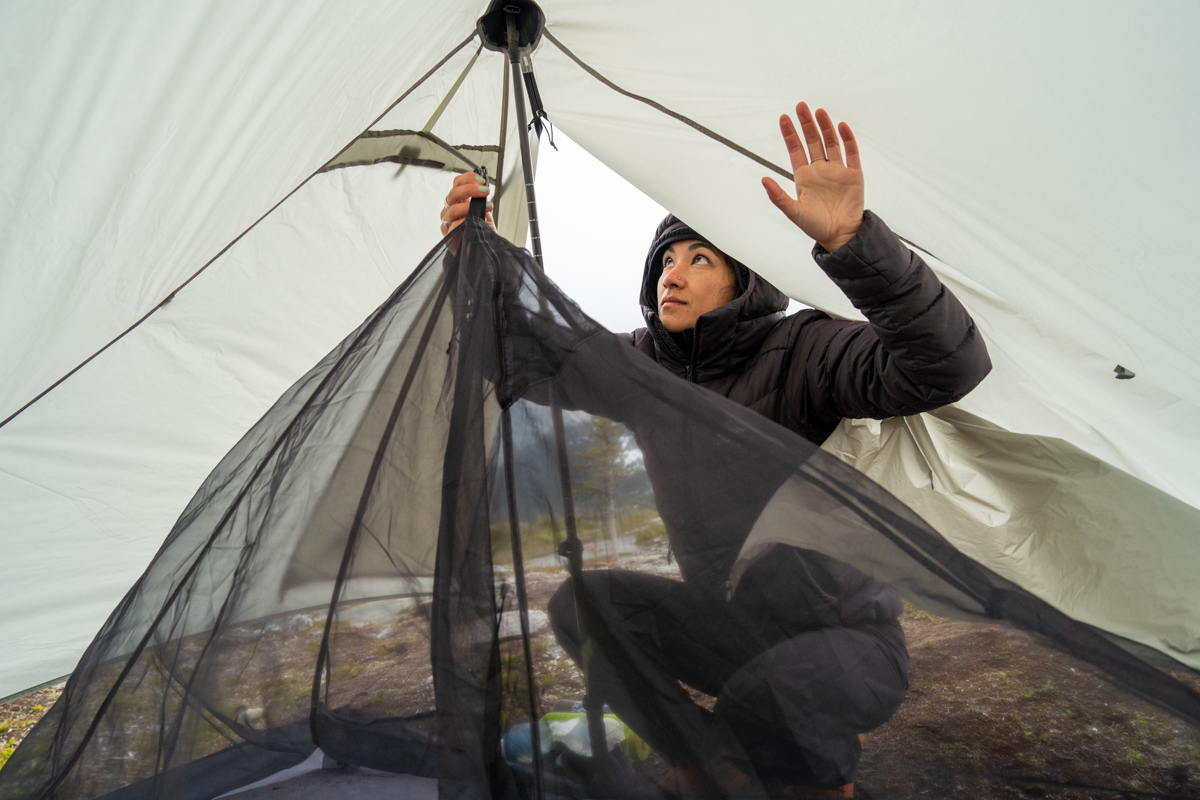
The fly can also be pitched in different configurations to adjust airflow. On warm nights, both sides of the fly can be rolled back to maximize airflow (and allow for stargazing). In light drizzles, it can be pitched in “porch mode,” which turns the vestibule door into a large awning. In truly stormy weather, you batten down the fly by lowering the pitch. And in more challenging three-season conditions, the mesh body can be swapped for a solid inner tent, boosting warmth and protection from blowing rain, snow, or sand.
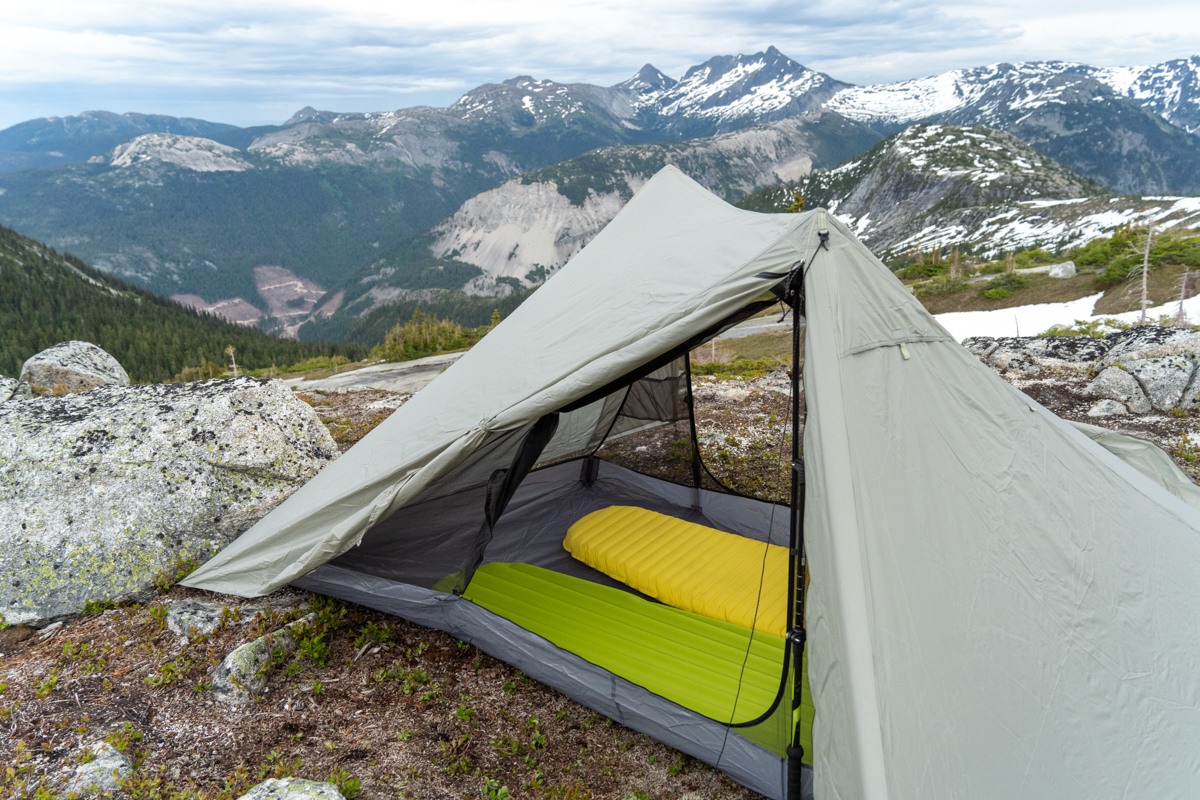
I consider vestibule space to be a critical feature in all two-person tents: By storing backpacks, hiking boots, and other gear outside of the tent, interior livability can be maximized. Thanks to its unique geometry, the X-Mid 2 has some of the largest vestibules I’ve used on a trekking-pole-supported tent, measuring a palatial 11.5 square feet on each side. This is bigger than the vestibules of both the Tiger Wall UL 2 and Tarptent Double Rainbow (8 sq. ft. for both) and only bested by the Tarptent Statospire 2, which has slightly larger 12.8-square foot vestibules. Each of the X-Mid’s vestibules can easily fit a pack, shoes, stove kit, and water storage with enough room to cook meals out of the rain.
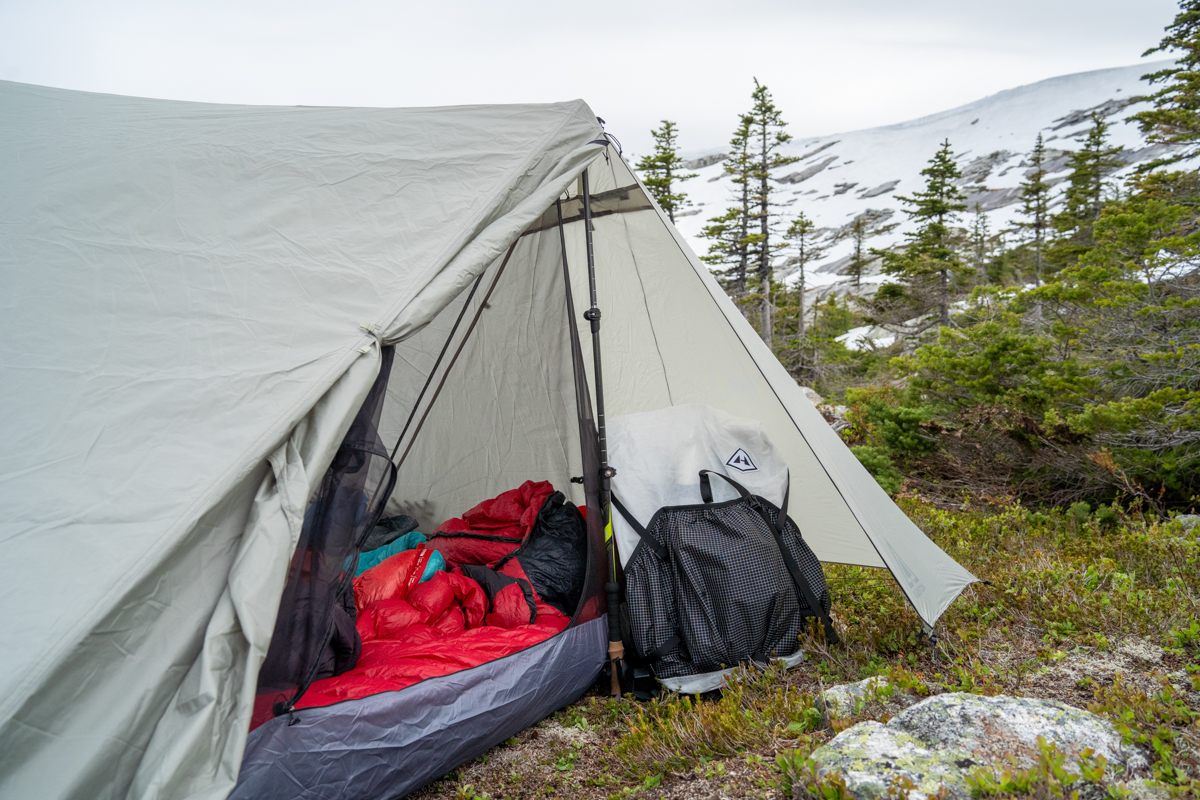
The storage on the inside of the X-Mid 2 is a different story: In order to keep weight light, pockets are kept to a minimum. There are just four small mesh pockets in total, two beside the doors and two upper gear pockets along the ridgeline. Each is large enough to fit a smartphone, gloves, beanie, headlamp, or other small items. We wish there was a larger mesh pocket, like the “mezzanine” pocket on Big Agnes’s Tiger Wall UL, to store loose clothing or larger items. Still, the lack of interior storage isn’t a massive inconvenience, it just requires some creativity for organizing gear inside the tent.
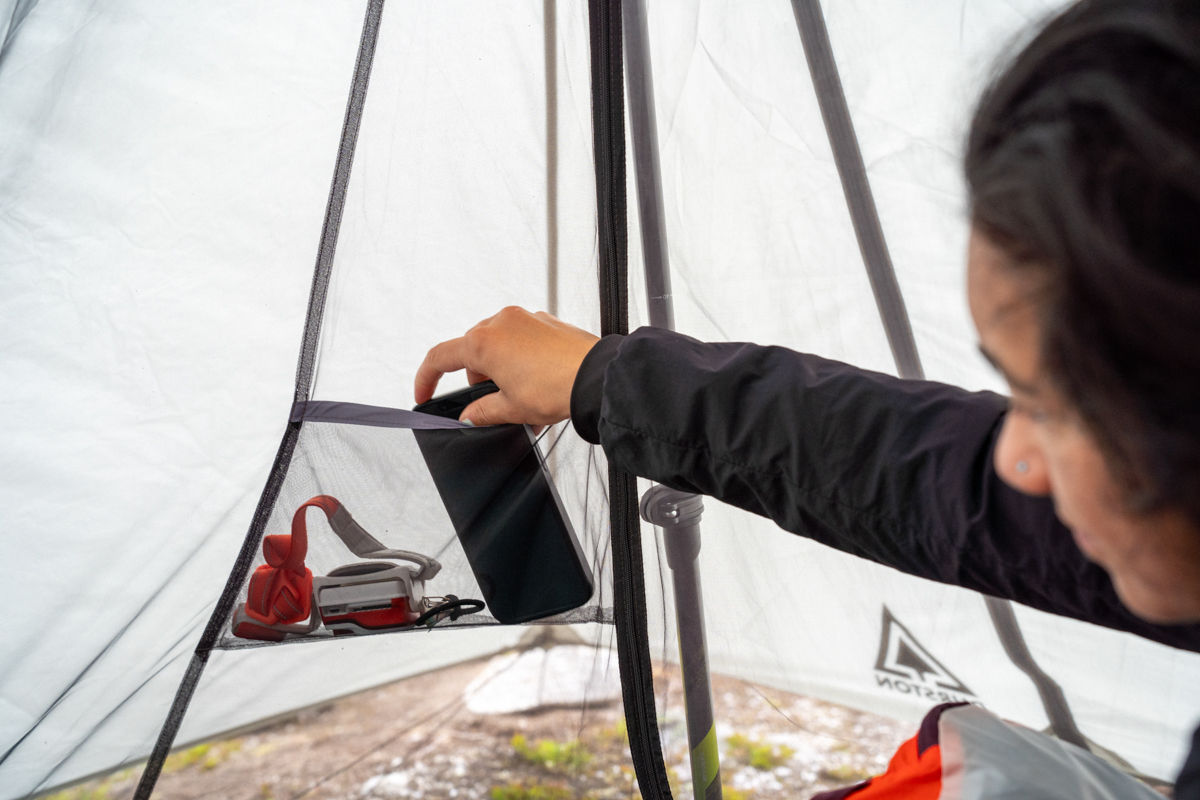
Trekking pole-supported tents have a reputation for being difficult to set up—often requiring careful tensioning of guylines and meticulous staging of stakeout points—but I didn’t find this to be the case with the X-Mid 2. Even without practice, this tent is remarkably easy to pitch. Hexagonal shapes are more common among trekking pole tents, but the X-Mid’s rectangular footprint makes it easy to visualize each stakeout point. To set it up, simply stake the four corners in a rectangular shape and insert your trekking poles into the grommet, and then raise the ridgeline taut. Once pitched, little adjustments can be made to storm-proof the tent further, such as using the line locks to tension a corner or two, raising the trekking poles to tension the peak fabric, or staking out the additional guy-out points along the ridgeline and doors. All told, it took my partner and me under three minutes to get a good pitch without any previous experience with the tent. The only caveat we ran into was finding a big enough area to pitch the tent—the large footprint requires some creativity when pitching on hard or uneven ground.
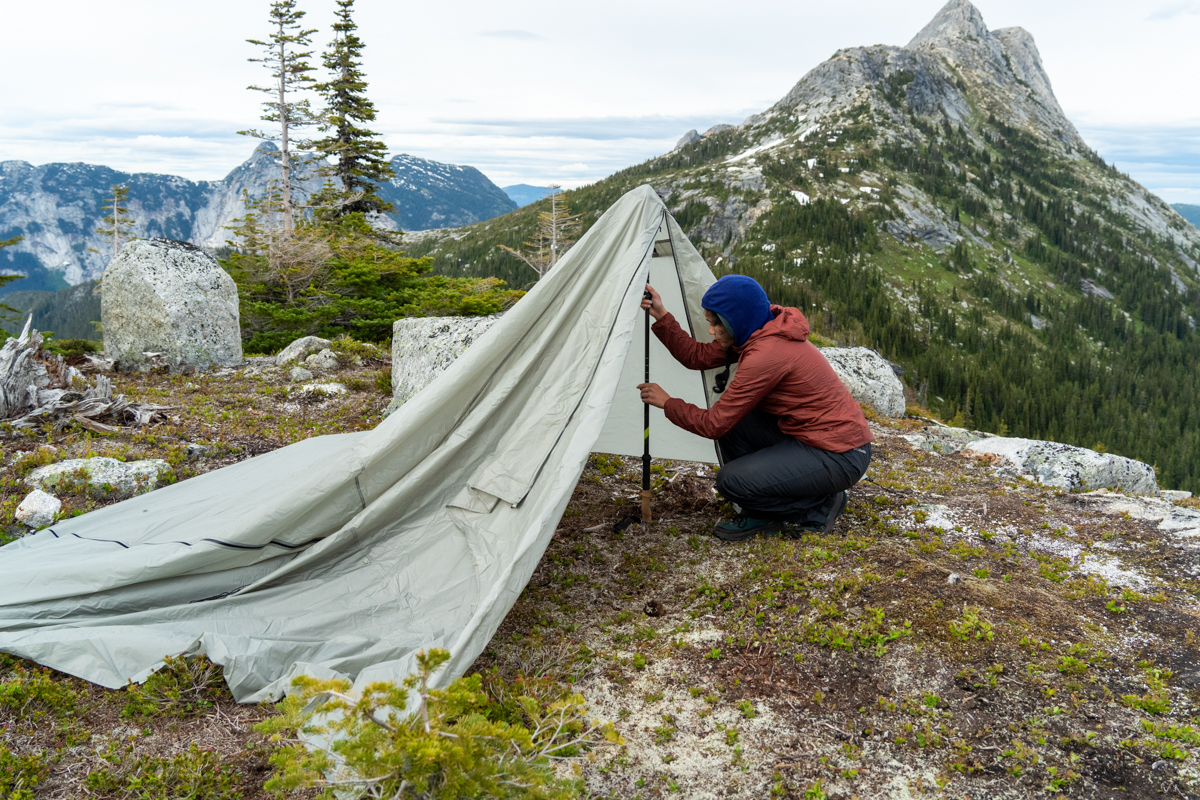
The X-Mid can also be pitched fly-first to keep the inner dry in wet weather, which came in handy during some storms I encountered in the backcountry. This was also much easier to do on the X-Mid than other trekking pole-supported tents I’ve used. Teardown was just as simple as setup, and I found it best to quickly detach the inner and stuff it into its separate stuff sack before tearing down the fly. I like keeping the fly at the top of my pack so it has a better chance at drying out while hiking—the quick access is also helpful to set it up as an impromptu shelter to weather out rainstorms on the trail.
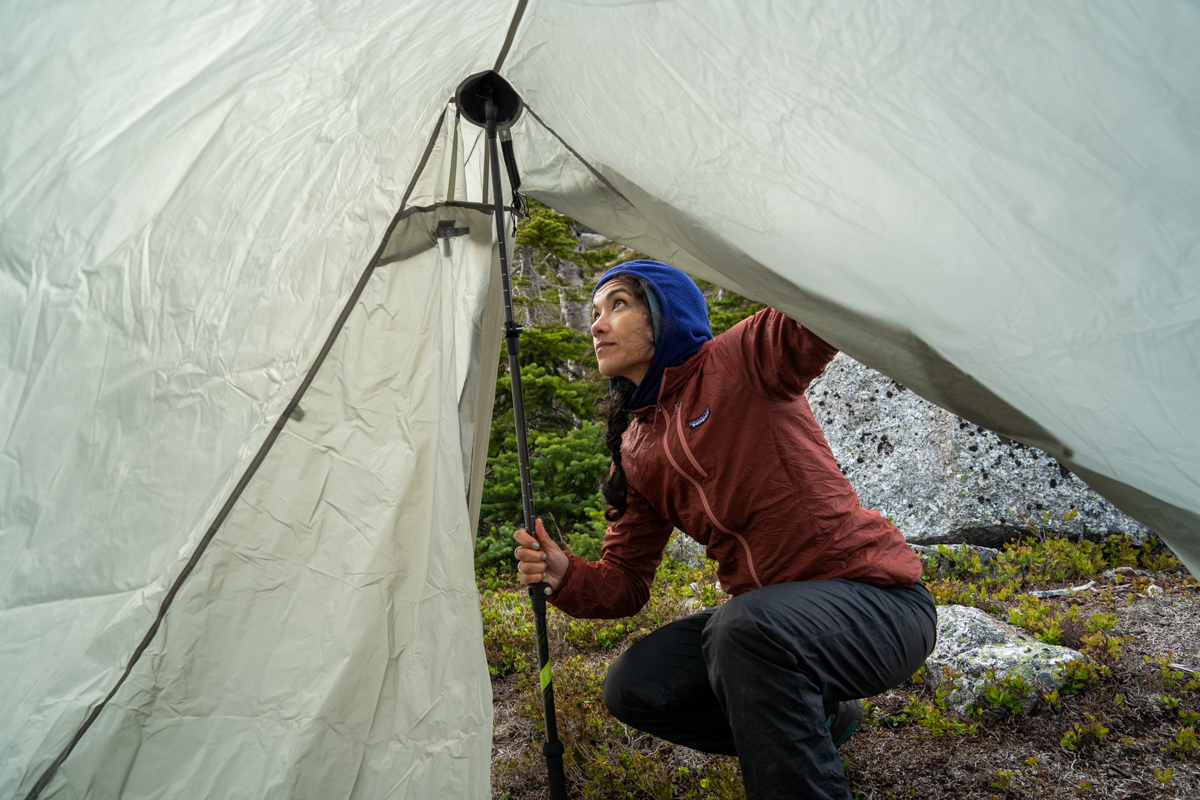
Since introducing the X-Mid 2, Durston has created several other tents based on the same winning combination of geometry and materials. We tested the X-Mid 2 version for this review, which comes stock with a mesh inner, but there is also the option to purchase the solid inner version as a complete package for $314 (it can also be purchased separately for $150). For the solo hiker, the X-Mid 1 is a compelling option, weighing 1 pound 9 ounces (for the mesh inner version) and boasting about 21 square feet of floor space and the same massive vestibules as its bigger sibling (peak height is slightly reduced to 46 in.). Like the two-person version, the X-Mid 1 is also offered with a solid inner or purchased as a separate accessory.
For hikers serious about shaving weight, Durston Gear also offers X-Mid tents in Dyneema versions, known as the ‘Pro’ models. The 2-person Pro model comes in at a premium price ($739) and shares the same robust and spacious geometry as the silpoly version, but weighs significantly less (1 lb. 1.9 oz.). The Pro models are also single-wall hybrid construction, meaning they can’t be pitched fly-only or have the inner swapped out like the regular versions, so ventilation may suffer as a result.
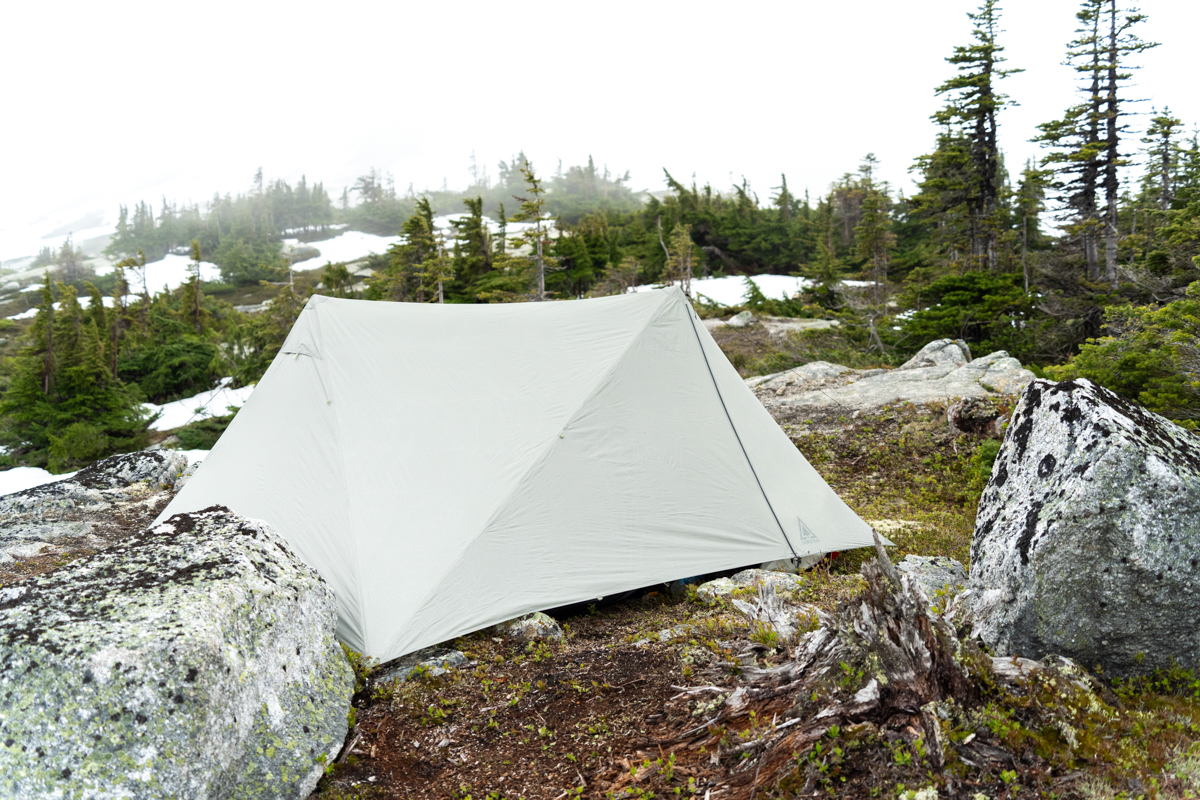
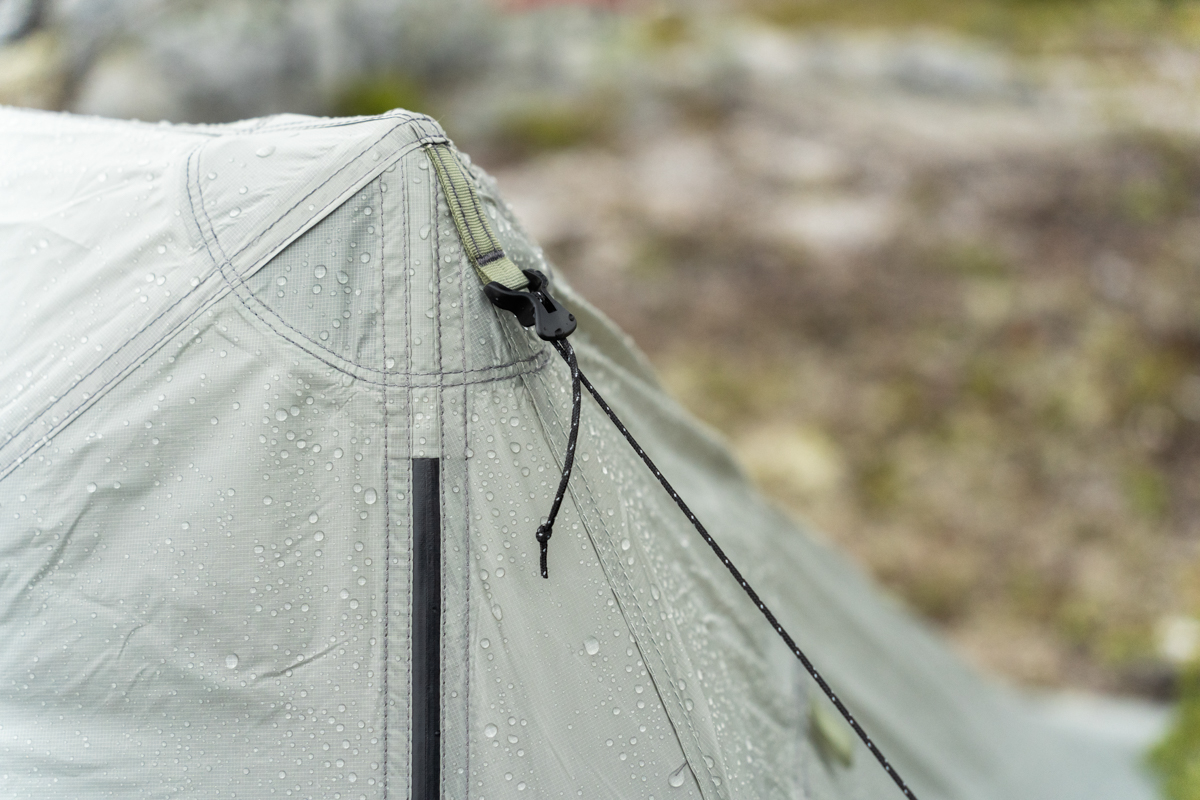
| Tent/Shelter | Price | Category | Weight | Floor Dimensions | Fly Fabric | Capacities |
|---|---|---|---|---|---|---|
| Durston X-Mid 2 | $289 | Trekking pole | 2 lb. 7.8 oz. | 92 x 52 in. | Silpoly (20D) | 1P, 2P |
| Zpacks Duplex Classic | $699 | Trekking pole | 1 lb. 1.9 oz. | 90 x 45 in. | DCF (.55/.75 oz.) | 2P, 3P |
| Tarptent Double Rainbow | $349 | Semi freestanding | 2 lb. 9.5 oz. | 88 x 50 in. | Silnylon (20D) | 1P, 2P, 3P |
| Big Agnes Tiger Wall UL2 | $480 | Semi freestanding | 2 lb. 8.0 oz. | 86 x 52/42 in. | Nylon (15D) | 1P, 2P, 3P |
It’s tough to beat the X-Mid’s combination of price, build quality, and weight-savings—hence why it ranks so well in our ultralight tent round-up—but there’s no shortage of worthy alternatives on the market. For those willing to spend more, Dyneema tents like the Zpacks Duplex Classic offer compelling advantages: Dyneema is prized in the ultralight community for its excellent strength-to-weight ratio and inherent waterproofing, and at just 1 pound 1.9 ounces, the Duplex is well over a pound lighter than the X-Mid without sacrificing much interior space (90 x 45 inches). It also features a taller bathtub floor for better wet-weather protection. However, with a $699 price tag, the X-Mid remains the clear value leader and a more approachable entry point for backpackers new to ultralight gear.
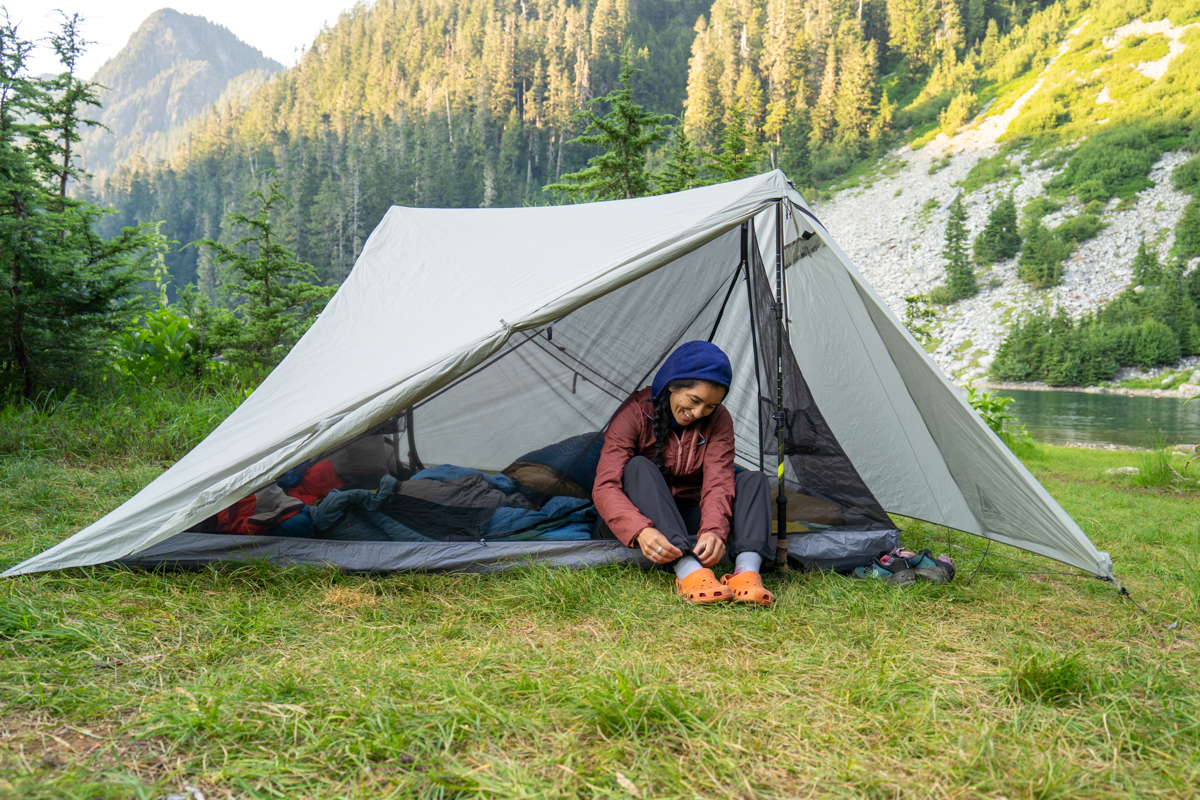
If the X-Mid’s trekking pole-supported design feels daunting, you might consider a freestanding or semi-freestanding alternative. In the latter category lands Tarptent’s Double Rainbow and Big Agnes’s Tiger Wall UL2. Both use traditional tent poles—though still require some guying out—and feature better-situated interior pockets for improved organization (we’re especially fond of the Tiger Wall’s overhead storage). The Double Rainbow comes closest in price to the X-Mid at $349, while both undercut the Duplex by a wide margin. That said, the X-Mid still stands out: it’s lighter and roomier than either the Tiger Wall UL2 or the Double Rainbow, and we prefer its silpoly fly for its resistance to sagging in wet conditions. Once you get past the initial learning curve of setting up a trekking pole-supported tent, we think the X-Mid delivers the best overall performance-to-price ratio in its class.
Back to the Durston X-Mid 2 Review See Our Ultralight Tents Guide